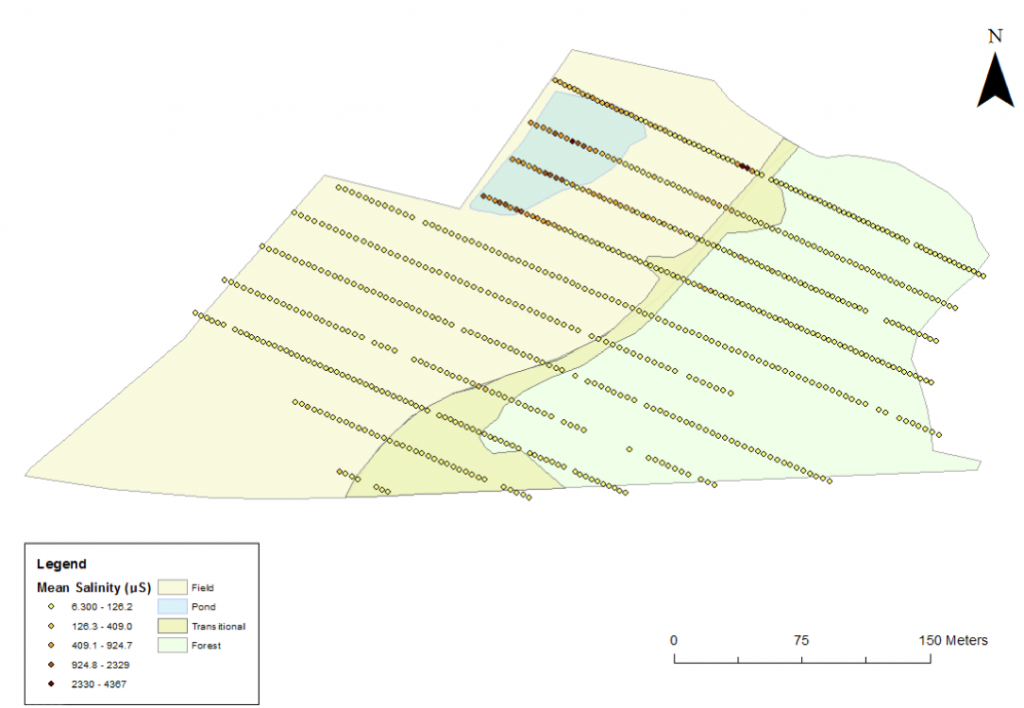Lab members who contributed to the following research include: Tracy Keza (’17), Jordan Fisk (’17), Emily Hamilton (’17), Jenna Wilborne (’15) and Kate Furgueson (’15).
Methods
Soil Sample Collection: Soil samples were gathered from plots every 2.5 meters along 12 transects bisecting Knox Preserve. Soil was collected 3-5 times per plot using a 2 X 15 cm soil probe, until roughly 75 grams of wet soil was collected. The sample was placed into a NASCO Whirl-Pak Bag and sealed, and samples were refrigerated at 4° C for storage.
Carbon Analyses: A 1 g sample of wet soil from each plot was weighed into a clean porcelain crucible (Fisherbrand 5 mL) and dried in an oven (Quincy Lab Inc. Model 40 GC) at 105°C for 24 hours. The dry weight was measured on a scale (Mettler AE 100), samples were placed in a muffle furnace (Bernard Thermolyne 1400) for 4 hours at 550°C and then weighed again. The same procedure was repeated for samples at 950°C in the furnace for 2 hours.
Salinity Analyses: The wet soil equivalent of 10 g of dry soil was weighed into a glass beaker (100 mL), deionized water (50 mL) was added and the mixture stirred for 30 seconds until homogenized. The mixture was then left to settle for at least 1 hour. A conductivity meter (IQ 170) was used to measure soil salinity. The conductivity probe was immersed into the aqueous portion of the soil-water solution, and the conductivity reading and temperature of the liquid recorded. Measurements for each sample were repeated three separate times, and the probe was rinsed with deionized water between each measurement.
Results

Salinity (μS) levels in soils from the marshland habitat at Knox Preserve (Stonington, CT) were significantly (P < 0.05) higher than those elsewhere at the site; however, measured salinity levels were not high enough to be strongly injurious to plant growth or establishment.

Organic carbon (%) levels in soils from shrub land and marshland habitats at Knox Preserve (Stonington, CT) were significantly (P < 0.05) higher than those in grasslands soils.
